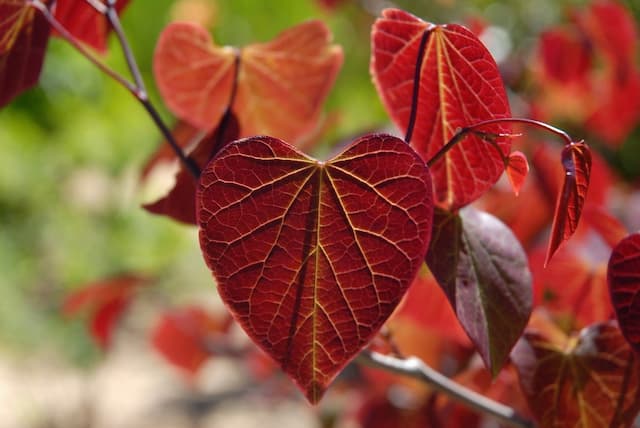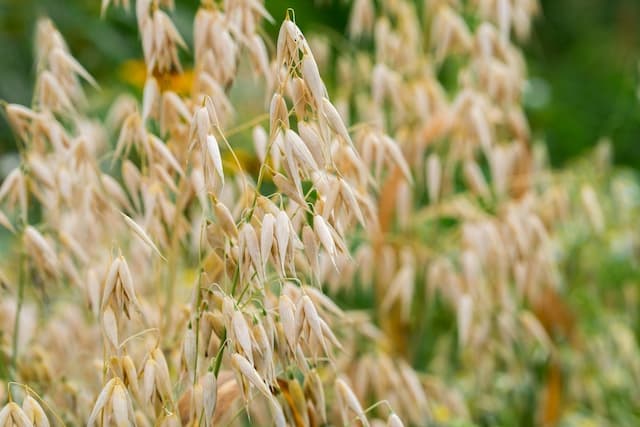Moroccan Broom Argyrocytisus battandieri

ABOUT
The Moroccan Broom, more commonly known as the Pineapple Broom, is a visually striking plant recognized for its distinctive features. Presenting a unique grey-green hue, the leaves are divided into leaflets which are silkily textured. These leaflets clasp gracefully onto stems, creating an almost feathery backdrop for the flowers. Resembling pineapples both in scent and shape, the bright yellow, conical shaped flower clusters emerge in abundance, bringing a vibrant display in late spring and early summer. The petals of these blossoms exhibit a velvety texture and form tight clusters that stand out against the foliage, giving the plant an exotic and tropical aura.
About this plant
 Names
NamesFamily
Fabaceae
Synonyms
Moroccan Broom, Pineapple Broom, Atlas Broom
Common names
Cytisus battandieri, Genista battandieri.
 Toxicity
ToxicityTo humans
The plant known as Moroccan Broom (Argyrocytisus battandieri) has certain parts, particularly the seeds, that are considered toxic if ingested by humans. The symptoms of poisoning from eating parts of this plant can include vomiting, diarrhea, and stomach pains. Ingesting significant quantities can lead to more severe health issues, so it is advisable to avoid consuming any part of the Moroccan Broom.
To pets
Like in humans, the Moroccan Broom (Argyrocytisus battandieri) is toxic to pets, with the seeds being particularly dangerous. If pets ingest parts of this plant, they may display symptoms such as vomiting, diarrhea, and abdominal discomfort. Severe poisoning can lead to more critical health complications. It is important to keep pets away from this plant to prevent accidental ingestion.
 Characteristics
CharacteristicsLife cycle
Perennials
Foliage type
Deciduous
Color of leaves
Green
Flower color
Yellow
Height
10-15 feet (3-4.5 meters)
Spread
10-15 feet (3-4.5 meters)
Plant type
Shrub
Hardiness zones
7
Native area
Morocco
Benefits
 General Benefits
General Benefits- Aesthetic appeal: The Moroccan Broom, Argyrocytisus battandieri, provides ornamental value with its bright yellow flowers and silvery-green foliage.
- Attracts pollinators: Its blooms attract bees and butterflies, supporting local ecosystems.
- Drought tolerance: Once established, the plant is drought-resistant, making it suitable for xeriscaping and dry climate gardens.
- Low maintenance: It requires minimal care once established, making it a good choice for low-maintenance landscapes.
- Fragrant flowers: The blooms have a strong, pleasant fragrance, often likened to the smell of pineapples, adding a sensory experience to gardens.
- Screening plant: It can be used as a screening plant due to its size and density, offering privacy and wind protection.
- Soil stabilization: This plant can help prevent soil erosion on slopes due to its root system.
- Wildlife habitat: It provides shelter and food for various wildlife species, such as birds and insects.
 Medical Properties
Medical PropertiesThis plant is not used for medical purposes.
 Air-purifying Qualities
Air-purifying QualitiesThis plant is not specifically known for air purifying qualities.
 Other Uses
Other Uses- Moroccan Broom's dried branches can be used in crafting and floral arrangements, serving as a unique and sturdy component for creative decorations.
- The plant's wood is sometimes used for making small handcrafted items like utensils or decorative objects due to its texture and grain.
- Moroccan Broom provides shelter and habitat for wildlife, particularly in its native regions, supporting biodiversity.
- The seeds of Argyrocytisus battandieri can be cold-pressed to extract an oil that is useful for wood treatment and polish.
- The plant is used in perfumery for its sweet, tropical scent reminiscent of pineapples, as an inspiration or a natural fragrance component.
- Moroccan Broom can be used as a botanical teaching tool in educational settings to help students learn about plant adaptations in arid environments.
- The plant's unique appearance and growth habit are often utilized in landscape design to create focal points or to add an exotic touch to gardens.
- Due to its nitrogen-fixing ability, Moroccan Broom can be planted to help improve soil fertility in poor soils.
- The resilient nature of Argyrocytisus battandieri enables it to be used for land reclamation projects, particularly in arid and semi-arid regions.
- Moroccan Broom’s dense growth can be utilized for erosion control, helping stabilize slopes and prevent soil degradation.
Interesting Facts
 Feng Shui
Feng ShuiThe Moroccan Broom is not used in Feng Shui practice.
 Zodiac Sign Compitability
Zodiac Sign CompitabilityThe Moroccan Broom is not used in astrology practice.
 Plant Symbolism
Plant Symbolism- Exotic Beauty: The Moroccan Broom or Argyrocytisus battandieri, with its unique silvery foliage and bright yellow flowers, symbolizes exotic beauty and allure.
- Rarity: As a less common garden plant outside of its native habitat, the Moroccan Broom represents rarity and uniqueness in the plant world.
- Ease of Growth: Known for its ability to adapt to various soil conditions and its drought resistance, the Moroccan Broom symbolizes resilience and low maintenance in relationships or projects.
- Sensory Pleasure: With its pineapple-scented blossoms, this plant stands for sensory delight and the joy of engaging with the natural world through our senses.
 Water
WaterThe Moroccan Broom, or Argyrocytisus battandieri, is drought-resistant but appreciates regular watering during its growing season in spring and summer. It should be watered deeply once a week with about 1-2 gallons of water, depending on the size and maturity of the plant. During the fall and winter months, water sparingly, providing enough to prevent the soil from completely drying out, which might equate to a few ounces every few weeks. Always check that the top inch of soil is dry before watering again to avoid overwatering, which can lead to root rot.
 Light
LightThe Moroccan Broom thrives in full sun, enjoying at least six hours of direct sunlight per day. The best spot for this plant would be in a south-facing garden or against a wall that reflects sunlight, maximizing the light exposure. However, it can tolerate light shade, especially in the hottest parts of the day in very warm climates.
 Temperature
TemperatureMoroccan Broom prefers a temperate climate and can tolerate temperatures between 40 to 85 degrees Fahrenheit. It can survive brief dips just below freezing, but sustained cold under 32 degrees Fahrenheit can damage the plant. The ideal temperature range for optimal growth is between 50 and 75 degrees Fahrenheit.
 Pruning
PruningPrune Moroccan Broom to maintain its shape and encourage robust growth. Pruning should be done after flowering, typically in late summer, by cutting back the spent flower stems and shaping the plant as desired. It generally requires pruning once a year to remove any dead or damaged wood and to promote fresh, new growth.
 Cleaning
CleaningAs needed
 Soil
SoilMoroccan Broom (Argyrocytisus battandieri) thrives in well-draining soil with a pH of 6.0 to 7.5. A mix of two parts loam, one part sand or perlite, and one part compost is ideal. Regular garden soil amended with organic material for aeration and drainage creates the suitable soil structure for Moroccan Broom.
 Repotting
RepottingMoroccan Broom, also known as Pineapple Broom, rarely needs repotting due to its size; it is mainly grown outdoors. In a pot, repot young plants yearly, mature plants every 2 to 3 years, or when root bound.
 Humidity & Misting
Humidity & MistingPineapple Broom (Argyrocytisus battandieri) is tolerant of a range of humidity levels and does best in outdoor environments where it can benefit from natural air circulation.
 Suitable locations
Suitable locationsIndoor
Provide full sun, less water in winter.
Outdoor
Plant in full sun, well-draining soil.
Hardiness zone
7-10 USDA
 Life cycle
Life cycleThe Moroccan Broom (Argyrocytisus battandieri) begins its life cycle as a seed, which germinates in well-drained soil with plenty of sunlight. Seedlings emerge and, if the climate is suitable, will establish a deep root system while developing a woody stem that supports the plant's growth into a shrub or small tree. As the Moroccan Broom matures, it produces distinctive silvery-green leaves and in early to mid-summer, it is adorned with yellow, pineapple-scented flowers that grow in conical clusters. After pollination, the flowers develop into seed pods, which later dry and release seeds to start a new generation. The plant has a seasonal dormancy period, typically in colder months, when growth slows down. With proper conditions and care, Moroccan Broom can live for many years, eventually reaching a mature height of up to 4 meters, with a similar spread.
 Propogation
PropogationPropogation time
Spring to summer
The most popular method of propagation for the Moroccan Broom (Argyrocytisus battandieri) is by semi-hardwood cuttings. This is typically done in mid to late summer. To propagate, cut a segment of the stem that is about 4 to 6 inches (10 to 15 cm) long, making sure it includes at least one node where leaves emerge. The lower leaves should be removed and the base of the cutting dipped in a rooting hormone to encourage root development. Then, insert the cutting into a pot filled with a mixture of peat and perlite or horticultural sand to provide good drainage and aeration. The cutting should be kept moist and in a well-lit area but out of direct sunlight. Roots usually develop within a few weeks to a month, after which the new plant can be gradually acclimatized to outdoor conditions before planting out.









